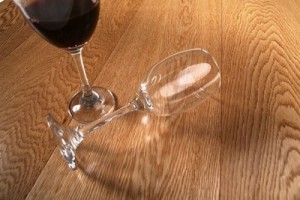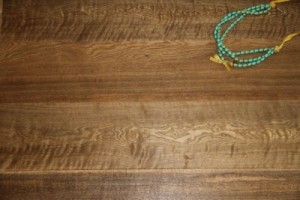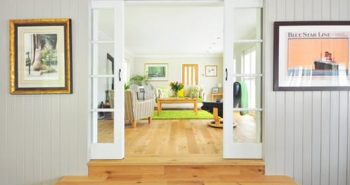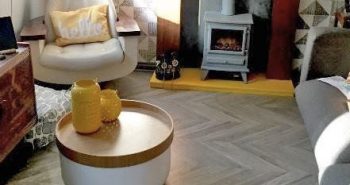Oak is an especially popular hardwood that is featured as the flooring material in many properties. It is strong enough to offer many years of service life, attractive enough to display natural characters in terms of sapwood, knots and mineral streaks, and available from managed forests so your decision to fit wood does not endanger other habitats. If you are considering oak flooring, you will like come across terms such as solid, engineered, grades and other industry ‘buzzwords’. These and others will be explained in this article.
Oak Flooring Types
Oak is widely used in two types of wood flooring. One type uses Oak solely, while an alternative uses Oak together with other manmade material. It is important to come to terms with the two types, as in some cases one is more suitable over the other.
 Solid Oak
Solid Oak
Wood flooring that includes 100% Oak is called solid oak flooring. Besides a layer of translucent finish such as oil, wax or lacquered, the floorboards features only hardwood. These are suitable in most properties with the exception of wet and humid areas due to Oak’s tendency to expand and contract in the face of climate changes. You can safely fit solid oak flooring in most of the property with the exclusion of the kitchen, bathroom and shower areas. There are plenty of flooring ideas for the bathroom, but certainly not the solid wood type.
 Engineered Oak
Engineered Oak
Wood flooring that combines natural hardwood and manmade materials is called engineered wood. In this case, the portion of natural wood is made from oak, hence engineered oak flooring. Each floorboard is constructed from a top layer of Oak in typical thickness of 3mm to 6mm thick, while the 3 to 5 additional layers are made from Plywood, MDF and other manmade materials. You can safely fit engineered oak across the entire property. In wet and humid areas, you should ensure a waterproof finish is applied to make the floor stable over the course of its service life.
Oak Flooring Grades
The presence of sapwood, knots, colour variations, mineral streaks and other characteristics of natural wood is categorised based on grade. Higher grades feature a more uniform look, while basic grades feature plenty of sapwood, knots, colour variations etc. The grade is determined by the proximity of the wood to the centre of the log. It isn’t an indication of quality, merely visual in which wood closer to the centre enjoys higher grading. Wood taken from the peripheral is as strong, though has more natural wood characteristics. There are four basic grades…
Prime Oak Grade
Prime is the highest grade in which prime floorboards feature very few sapwood, knots and overall colour between the floorboards is identical.
Select Oak Grade
Select is another premium grade, however sapwood and knots will appear infrequently. You should expect about 10% of the floorboard to include these features.
Natural Oak Grade
Popular due to budget, the natural grade features sapwood and knots up to 35mm in size. Colour variations between the floorboards are more significant.
Rustic Oak Grade
The most widely fitted grade is the rustic grade. On top the abundance of sapwood and knots, both the size and colour of the floorboards will vary significantly.
There isn’t a wrong choice when it comes to grade, it is question of taste and budget.







